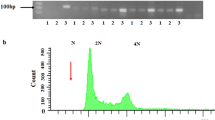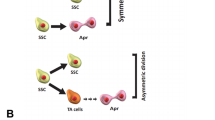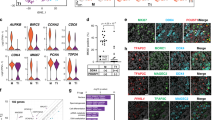Abstract
Postacrosomal sheath WW domain-binding protein (PAWP) is a novel sperm protein identified as a candidate sperm-borne, oocyte-activating factor (SOAF). However, regulation of PAWP gene expression is poorly understood. Therefore, we examined the PAWP gene expression across different stages of mouse embryonic stem cell (ESC)-based spermatogenesis in vitro and compared this expression at different stages of mouse testis development in vivo. Expression of PAWP was also examined in mouse embryonic fibroblasts (MEF), Sertoli cell, and the NIH3T3 cancerous cell line. We used a transgenic mouse ESC line C57BL/6J expressing Stra8-EGFP that was plated in murine ESC medium. To induce differentiation, cells were cultured on gelatin-coated medium with Retinoic Acid (RA) treatment. We applied reverse transcription-PCR and real-time PCR to analyze the differential expression of PAWP mRNA during different stages of mouse ESC differentiation in vitro parallel with mouse testis development in vivo and in cell lines. We found that expression of PAWP is increased during testis development in vivo with greatest expression at postmeiotic phase. It is also highly expressed in mouse ESC-derived germ-like cells after 30 d of RA induction in vitro. PAWP is remarkably expressed in mouse ESC and NIH3T3 cell line. These results indicate that PAWP plays a role in spermatogenesis and germ cell development. Moreover, we suggest PAWP as one of the markers that could be looked in ESC studies as a confirmed testis-specific gene. We also suggest an additional possible role for PAWP in proliferation of cancerous cell in general.




Similar content being viewed by others
References
Anderson E. L.; Baltus A. E.; Roepers-Gajadien H. L.; Hassold T. J.; de Rooij D. G.; van Pelt A. M.; Page D. C. Stra8 and its inducer, retinoic acid, regulate meiotic initiation in both spermatogenesis and oogenesis in mice. Proc. Natl. Acad. Sci. U. S. A. 105(39): 14976–14980; 2008.
Bowles J.; Knight D.; Smith C.; Wilhelm D.; Richman J.; Mamiya S.; Yashiro K.; Chawengsaksophak K.; Wilson M. J.; Rossant J.; Hamada H.; Koopman P. Retinoid signaling determines germ cell fate in mice. Science 312: 596–600; 2006.
Chan S. W.; Lim C. J.; Huang C.; Chong Y. F.; Gunaratne H. J.; Hogue K. A.; Blackstock W. P.; Harvey K. F.; Hong W. WW domain-mediated interaction with Wbp2 is important for the oncogenic property of TAZ. Oncogene 30: 600–610; 2011.
Chen H. I.; Einbond A.; Kwak S. J.; Linn H.; Koepf E.; Peterson S.; Kelly J. W.; Sudol M. Characterization of the WW domain of human Yes-associated protein and its polyproline-containing ligands. J. Biol. Chem. 272: 17070–17077; 1997.
Chen H. I.; Sudol M. The WW domain of Yes-associated protein binds a proline-rich ligand that differs from the consensus established for Src homology 3-binding modules. Proc. Natl. Acad. Sci. U. S. A. 92(17): 7819–7823; 1995.
Cheng L. J.; Zhou Z. M.; Li J. M.; Zhu H.; Zhu H.; Zhou Y. D.; Wang L. R.; Lin M.; Sha J. H. Expression of a novel HsMCAK mRNA splice variant, tsMCAK gene, in human testis. Life Sci. 71(23): 2741–2757; 2002.
Cooke H. J.; Lee M.; Kerr S.; Ruggiu M. A murine homologue of the human DAZ gene is autosomal and expressed only in male and female gonads. Hum. Mol. Genet. 5: 513–516; 1996.
Cram D. S.; O'Bryan M. K.; de Kretser D. M. Male infertility genetics—the future. J. Androl. 22: 738–746; 2001.
de Rooij D. G.; Russell L. D. All you wanted to know about spermatogonia but were afraid to ask. J. Androl. 21: 776–798; 2000.
Dhananjayan S. C.; Ramamoorthy S.; Khan O. Y.; Ismail A.; Sun J.; Slingerland J.; O'Malley B. W.; Nawaz Z. WW domain binding protein-2, an E6-assoiated protein interacting protein, acts as a coactivator of estrogen and progesterone receptors. Mol. Endocrinol. 20: 2343–2354; 2006.
Farini D.; Scaldaferri M. L.; Iona S.; Sala G. L.; De Felici M. Growth factors sustain primordial germ cell survival, proliferation and entering into meiosis in the absence of somatic cells. Dev. Biol. 285: 49–56; 2005.
Gaudet S.; Branton D.; Lue R. A. Characterization of PDZ-binding kinase, a mitotic kinase. Proc. Natl. Acad. Sci. U. S. A. 97: 5167–5172; 2000.
Guan K.; Wolf F.; Becker A.; Engel W.; Nayernia K.; Hasenfuss G. Isolation and cultivation of stem cells from adult mouse testes. Nat. Protoc. 4(2): 143–154; 2009.
Kanai F.; Marignani P. A.; Sarbassova D.; Yagi R.; Hall R. A.; Donowitz M.; Hisaminato A.; Fujiwara T.; Ito Y.; Cantley L. C.; Yaffe M. B. TAZ: a novel transcriptional co-activator regulated by interactions with 14-3-3 and PDZ domain proteins. EMBO J. 19: 6778–6791; 2000.
Komuro A.; Nagai M.; Navin N. E.; Sudol M. WW domain-containing protein YAP associates with ErbB-4 and acts as a co-transcriptional activator for the carboxyl-terminal fragment of ErbB-4 that translocates to the nucleus. J. Biol. Chem. 278: 33334–33341; 2003.
Lilford R.; Jones A. M.; Bishop D. T.; Thornton J.; Mueller R. Case–control study of whether subfertility in men is familial. BMJ 309(6954): 570–573; 1994.
Lim S. K.; Orhant-Prioux M.; Toy W.; Tan K. Y.; Lim Y. P. Tyrosine phosphorylation of transcriptional coactivator WW-domain binding protein 2 regulates estrogen receptor α function in breast cancer via the Wnt pathway. FASEB J. 25(9): 3004–3018; 2011.
Macias M. J.; Wiesner S.; Sudol M. WW and SH3 domains, two different scaffolds to recognize proline-rich ligands. FEBS Lett. 513(1): 30–37; 2002.
Malkov M.; Fisher Y.; Don J. Developmental schedule of the postnatal rat testis determined by flow cytometry. Biol. Reprod. 59(1): 84–92; 1998.
Matsuoka Y.; Iguchi N.; Kitamura K.; Nishimura H.; Manabe H.; Miyagawa Y.; Koga M.; Matsumiya K.; Okuyama A.; Tanaka H.; Nishimune Y. Cloning and characterization of a mouse spergen-1 localized in sperm mitochondria. Int. J. Androl. 27(3): 152–160; 2004.
Meistrich M. L.; van Beek M. E. Spermatogonial stem cells. In: Desjardins C.; Ewing L. L. (eds) Cell and molecular biology of the testis. Oxford University Press, New York, pp 266–295; 1993.
Mitsui K.; Tokuzawa Y.; Itoh H.; Segawa K.; Murakami M.; Takahashi K.; Maruyama M.; Maeda M.; Yamanaka S. The homeoprotein Nanog is required for maintenance of pluripotency in mouse epiblast and ES cells. Cell 113: 631–642; 2003.
Nayernia K.; Li M.; Jaroszynski L.; Khusainov R.; Wulf G.; Schwandt I.; Korabiowska M.; Michelmann H. W.; Meinhardt A.; Engel W. Stem cell based therapeutical approach of male infertility by teratocarcinoma derived germ cells. Hum. Mol. Genet. 13(14): 1451–1460; 2004.
Nayernia K.; Nolte J.; Michelmann H. W.; Lee J. H.; Rathsack K.; Drusenheimer N.; Dev A.; Wulf G.; Ehrmann I. E.; Elliott D. J.; Okpanyi V.; Zechner U.; Haaf T.; Meinhardt A.; Engel W. In vitro-differentiated embryonic stem cells give rise to male gametes that can generate offspring mice. Dev. Cell 11(1): 125–132; 2006.
Nourashrafeddin S.; Ebrahimzadeh-Vesal R.; Miryounesi M.; Aarabi M.; Zarghami N.; Modarressi M.H.; Nouri M. Analysis of SPATA19 gene expression during male germ cells development, lessons from in vivo and in vitro study. 2013. doi:10.1002/cbi3.10010.
Oko R.; Sutovsky P. Biogenesis of sperm perinuclear theca and its role in sperm functional competence and fertilization. J. Reprod. Immunol. 83(1–2): 2–7; 2009.
Oulad-Abdelghani M.; Bouillet P.; Décimo D.; Gansmuller A.; Heyberger S.; Dollé P.; Bronner S.; Lutz Y.; Chambon P. Characterization of a premeiotic germ cell-specific cytoplasmic protein encoded by Stra8, a novel retinoic acid-responsive gene. J. Cell Biol. 135(2): 469–477; 1996.
Sainz J.; Garcia-Alcalde F.; Blanco A.; Concha A. Genome-wide gene expression analysis in mouse embryonic stem cells. Int. J. Dev. Biol. 55(10–12): 995–1006; 2011.
Schmittgen T. D.; Lee E. J.; Jiang J. High-throughput real-time PCR. Methods Mol. Biol. 429: 89–98; 2008.
Scholer H. R.; Ruppert S.; Suzuki N.; Chowdhury K.; Gruss P. New type of POU domain in germ line-specific protein Oct-4. Nature 344: 435–439; 1990.
Sudol M. Yes-associated protein (YAP65) is a proline-rich phosphoprotein that binds to the SH3 domain of the Yes proto-oncogene product. Oncogene 9: 2145–2152; 1994.
Sudol M. Newcomers to the WW Domain-Mediated Network of the Hippo Tumor Suppressor Pathway. Genes Cancer. 1(11): 1115–1118; 2010.
Sudol M.; Hunter T. NeW wrinkles for an old domain. Cell 103(7): 1001–1004; 2000.
Sutovsky P.; Manandhar G.; Wu A.; Oko R. Interactions of sperm perinuclear theca with the oocyte: implications for oocyte activation, anti-polyspermy defense, and assisted reproduction. Microsc. Res. Tech. 61(4): 362–378; 2003.
Thielemans B. F.; Spiessens C.; D'Hooghe T.; Vandrschueren D.; Legius E. Genetic abnormalities and male infertility. A comprehensive review. European Journal of Obstetrics, Gynecology and. Reprod. Biol. 81: 217–225; 1998.
Varelas X.; Sakuma R.; Samavarchi-Tehrani P.; Peerani R.; Rao B. M.; Dembowy J.; Yaffe M. B.; Zandstra P. W.; Wrana J. L. TAZ controls Smad nucleocytoplasmic shuttling and regulates human embryonic stem-cell self-renewal. Nat. Cell Biol. 10(7): 837–848; 2008.
Wu A. T.; Sutovsky P.; Manandhar G.; Xu W.; Katayama M.; Day B. N.; Park K. W.; Yi Y. J.; Xi Y. W.; Prather R. S.; Oko R. PAWP, A sperm specific WW-domain binding protein, promotes meiotic resumption and pronuclear development during fertilization. J. Biol. Chem. 282: 12164–12175; 2007a.
Wu A. T.; Sutovsky P.; Xu W.; Vander Spoel A. C.; Platt F. M.; Oko R. The postacrosomal assembly of sperm head protein, PAWP, is independent of acrosome formation and dependent on microtubular manchette transport. Dev. Biol. 312(2): 471–483; 2007b.
Yuan L.; Liu J. G.; Zhao J.; Brundell E.; Daneholt B.; Höög C. The murine SCP3 gene is required for synaptonemal complex assembly, chromosome synapsis, and male fertility. Mol. Cell 5(1): 73–83; 2000.
Zhang X.; Milton C. C.; Poon C. L.; Hong W.; Harvey K. F. Wbp2 cooperates with Yorkie to drive tissue growth downstream of the Salvador-Warts-Hippo pathway. Cell Death Differ. 18(8): 1346–1355; 2011.
Acknowledgments
This is a paper of a database from thesis entitled “Analysis of PAWP Gene Expression during in vitro Mouse Embryonic Stem Cell-Based Spermatogenesis” from Tabriz University of Medical Sciences. The authors would like to thank the Women's Reproductive Health Research Center, Tabriz University of Medical Sciences for granting of this work and also the Department of Medical Genetic, Faculty of Medicine, Tehran University of Medical Sciences for technical assistance.
Conflict of interest
The authors have not any conflicts of interest to disclose and all authors support submission to this journal.
Author information
Authors and Affiliations
Corresponding author
Additional information
Editor: T. Okamoto
Rights and permissions
About this article
Cite this article
Nourashrafeddin, S., Aarabi, M., Miryounesi, M. et al. Expression analysis of PAWP during mouse embryonic stem cell-based spermatogenesis in vitro. In Vitro Cell.Dev.Biol.-Animal 50, 475–481 (2014). https://doi.org/10.1007/s11626-013-9722-1
Received:
Accepted:
Published:
Issue Date:
DOI: https://doi.org/10.1007/s11626-013-9722-1




